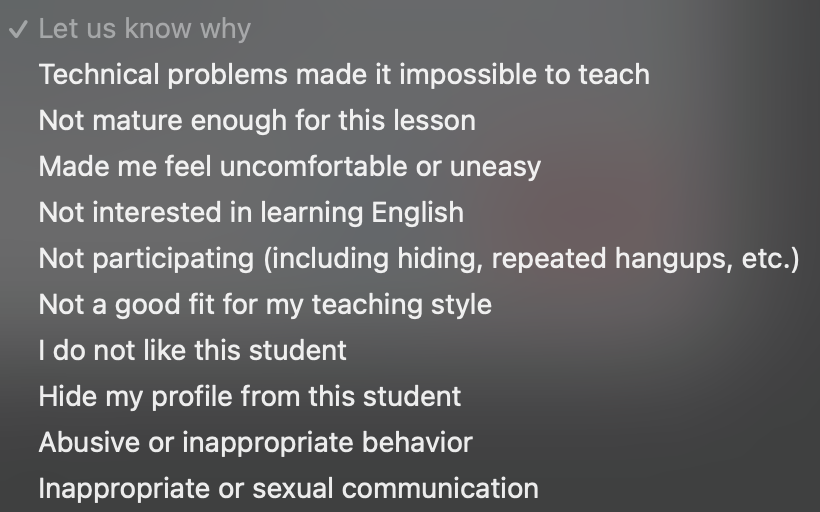Adventure on the Blog
Here’s How to Teach English Online and Make Money While Travelling
Let’s talk about something everyone wants to know: remote ways to make money while you travel that actually work. I see so many people talking about remote job opportunities but often there are some issues. Most opportunities require high-level skills, don’t provide a liveable salary or plain don’t work! Remote English teaching is one of the quickest and easiest remote jobs you can get started in just a few days. You can secure these positions without any prior experience or even a university degree. The only requirement is that you are a native English speaker! They aren’t going to make you millions, but they can sustain you while you travel so you can pursue your full-time travel dreams.
There are lots of different platforms where you can find English teaching gigs. There are some platforms that require experience or a degree, but I wanted to provide an opportunity that anyone can do. In this article, I’m going to talk about one specific company that I have personally used to teach English online. Cambly is an online platform that connects native English speakers with students from all over the world. They do not require any prior experience, a TEFL or a university degree. This means that Cambly is an opportunity for anyone to earn money teaching English remotely. They have two platforms, one for adults and one for children. I have personally only ever used the adult platform, as I have taught kids online before and I personally do not enjoy it. There are definitely pros and cons, and I’m going to lay them all out for you.
Getting started is quick and simple.
All you need to do in order to get started is create a profile, fill out some basic information, answer questions about your teaching style and film a short introduction video. That’s literally it. There is no interview! Once you have finished this process, Cambly will approve your profile and then you can get started! When you submit the application, it says it can take days or weeks in order to be approved because Cambly only accepts tutors based on student demand. I personally was accepted in two days, so for me it was really quick.

Once you are accepted, you will have to set up your payment information and provide a couple other pieces of information. Once this is complete you are free to start earning!
Cambly is extremely flexible and there is no shortage of students needing lessons.
Sometimes English learning platforms require tutors to work a minimum number of hours per week or on certain days. This is not the case on Cambly. You choose how many hours you open and when. Since there are students from all over the world, there are students needing tutors 24 hours per day. This was really convenient for me, as I travel a lot and I’m constantly changing time zones. It did not matter what time of day it was, there were always students. There is also no location requirement, unlike some remote positions. So wherever in the world you happen to be, you can make money while travelling.
You have two options for accepting lessons. You can open up your availability and students can request to book. They have to book in advance and you can choose to accept or not. The problem with this is that if no one books, then you don’t get any hours. That’s why I used the Priority Hour feature instead, as a guaranteed way to make money. Priority Hours are similar to opening availability, however there are some differences. You make yourself available for the entire hour and students can call you without a reservation. Students can also make reservations during Priority Hours, but the beauty of it is that if you don’t have any reservations, you still get calls. Cambly guarantees 15 minutes worth of pay during a Priority Hour, but I have personally done over 100 Priority Hours and never didn’t receive a call. Scheduling Priority Hours is the best strategy in my opinion, as you don’t need reservations in order to make money.
After a few months, I had some regular students. These were students that scheduled repeating lessons each week, so this meant consistent income. You also get ratings and reviews on Cambly. Since my rating was high and my reviews were good, I was often completely booked for lessons most days. It takes a bit of time to build a reputation and find regulars, but it’s worth the wait. I’ve had some friends who also taught online but with different companies/platforms, and they often complained there weren’t enough hours. That is one thing I give Cambly huge credit for, there are always students and hours to be picked up.
I am not going to lie to you, the pay is not the highest.
Cambly pays $10.20 USD per hour. It isn’t terrible, but it definitely isn’t the highest. If you’re travelling somewhere like Southeast Asia which is super cheap, it’s enough to sustain you. There are other online ESL jobs out there, but getting hired is more difficult. A lot will require experience, a university degree, a TEFL or a combination of all of these. There will also be a formal interview and getting started is not normally quick nor easy. So there is definitely a trade-off between ease and salary.
In good news, Cambly pays for trial lessons, late students, no-shows and cancellations. Some companies do not pay tutors for trial lessons, which in my opinion is crazy. On Cambly, you are always paid for lessons. Cambly also pays the full amount of the lesson even if the student is late (up to 10 minutes). If a student no-shows or cancels 24 hours or less before the lesson Cambly still pays out a portion of the lesson. So even though the pay is lower, it’s still not a bad gig.
Speaking of money, Cambly pays every week. This is a huge bonus if you’re travelling, as you don’t have to wait until the end of the month to get your money.
Cambly does not require any lesson planning, so there is no preparation required for lessons.
As someone who used to be a primary school teacher, I can attest lesson planning takes so much time. The fact that I didn’t need to do any preparation before lessons was a huge bonus. There is no “normal” way to run Cambly lessons. It is completely up to you and your student on what you do during the lesson. In my experience, it was normally one of three things.
The first was just free conversation. A lot of students on this platform want to practice real-life conversational English. They have in-depth knowledge of grammar, reading and writing, but lack speaking skills. During these classes, we talk about anything and everything.
The second most common were the Cambly prepared slides. Cambly has a huge library of slide decks that range from business topics to travel to interview practice and so much more. They are broken up by level, so you can choose one appropriate for your student’s level. Students have the choice to request a lesson plan, so sometimes it will show up at the start of the lesson. If you and your student decide you want a lesson plan at some point, you have access to the entire library during the lesson.
The last was reading articles and discussing them. Normally the student would choose one they are interested in and send the link to me. They would read the article to me and then we would discuss the article. This gave some reading practice and speaking practice.
In all honesty, there were times when it was a bit painful.
Most students were friendly and talkative, but not always. Sometimes you get students that barely speak any English. Trying to speak to someone for 30 minutes who doesn’t speak English is a struggle and a half. The Cambly chat box does have a feature that translates their language into English and vice versa, but in my opinion this defeats the purpose. The whole reason people are on Cambly is to practice speaking and listening, so translating and typing back and forth isn’t helping very much. This didn’t happen often, but it definitely does happen.
The other frustrating part would be when you get students who don’t keep the conversation going. It isn’t an issue of them not understanding, they just aren’t very talkative. Getting a student that answers every question with one word can be super annoying. Again, not super common but it can happen.
The good news is that you can report students for a number of reasons and not be matched with them again. So if you get someone not participating, rude or some other problem, you don’t have to teach them again. You can also report them during a lesson, so if it’s really painful you can end the lesson early.

All of the reasons you can report students and not be matched with them again.
The other issue that can come up is when you get children. The adult version of Cambly is only for people 18 or older. There is a Cambly kids platform for children and those tutors get a slightly higher hourly rate. I personally ended lessons if I got children because I was being paid the lower adult rate. Luckily you can end the lessons if you get a call from a child, but just something to be aware of.
Overall I think Cambly is a great option for making money online quickly and easily.
Finding location-independent teaching jobs or location-independent jobs in general isn’t always the easiest. Cambly has minimal requirements, allows you to get started quickly and earn from anywhere. While the pay isn’t the highest, the hours are consistent and it’s a great option for anyone looking to start their digital nomad teaching journey while travelling.
I’ll be doing more articles in the future about remote work opportunities and my own experiences, so make sure you follow my socials (@travellingaly) to be notified! Questions about teaching English online? Do you travel and teach English on a different platform? Let me know in the comments!
This article is not sponsored. This is completely my personal opinion.

December 12, 2023
Leave a Reply
My Story
At first I thought I would be a doctor, then a lawyer, next I tried my hand at teaching and then running hotels...Safe to say I'm winging it just like everyone else!
I've always had a love for travel, but I also knew that full-time travel is often considered unrealistic. I went to university, worked "typical" jobs and realized I had never been happier than when I was travelling. Living outside of my comfort zone and being spontaneous is where I thrive. I decided to pack up my life and move across the world alone. Two weeks later I left, and I have never looked back since. Now, nearly three years later, my goal is to share my love of travel with others. I want to show people that full-time travel is accessible for anyone. Don't get me wrong, it is definitely not always sunshine and rainbows, but neither is anything in life. So welcome to my adventure, where I'm getting REAL with you guys. How I got started, what it takes to travel full-time, how to sustain yourself, the lessons I've learned, the mistakes I've made and everything else along the way.
Be the first to comment!